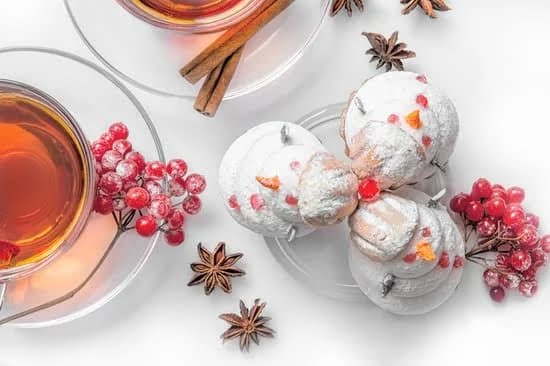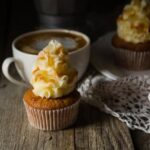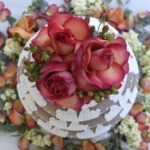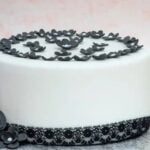Are you a beginner looking to learn how to decorate a cake with butter icing? In this article, we will guide you through the step-by-step process of creating beautifully decorated cakes using butter icing. Butter icing is a popular choice for cake decoration due to its creamy texture and versatility, and we will show you everything you need to know to get started.
Butter icing, also known as buttercream, is a smooth and creamy frosting that is perfect for decorating cakes. It can be easily colored and flavored, making it a versatile option for creating stunning designs on cakes. In this section, we will provide an overview of what butter icing is and why it is such a popular choice for cake decoration, setting the stage for the detailed information that follows in the rest of the article.
Whether you are new to baking or looking to enhance your cake decorating skills, understanding the basics of butter icing is essential. From essential tools and ingredients to different decorating techniques and troubleshooting tips, this article will equip you with everything you need to know to create beautifully decorated cakes with butter icing. So let’s dive in and explore the wonderful world of butter icing and cake decoration.
Essential Tools and Ingredients
One of the most crucial aspects of decorating a cake with butter icing is having the right tools and ingredients. Without these essential items, achieving beautiful designs and professional-looking decorations will be incredibly challenging. Therefore, it’s important to understand what tools and ingredients are necessary for successful cake decorating with butter icing.
First and foremost, you will need piping bags and tips to create different designs and patterns on the cake. Piping bags are available in reusable or disposable options, while tips come in various shapes and sizes to achieve different effects. Additionally, food coloring is essential for adding vibrant colors to your butter icing. Gel-based food coloring is highly recommended as it provides intense hues without altering the consistency of the buttercream.
When it comes to buttercream itself, there are different types that you can use for decorating. American buttercream, made with butter, powdered sugar, and vanilla extract, is a popular choice due to its simplicity and sweetness. Swiss meringue buttercream is another option that offers a smoother texture and less sweetness than American buttercream. Lastly, Italian meringue buttercream has a light and airy texture, making it ideal for intricate designs.
To enhance your cake decorating skills and expand your range of techniques, investing in stencils can also be beneficial. Stencils allow you to create detailed patterns on the cake’s surface by spreading colored icing over them with a palette knife or spatula. This adds a professional touch to your cake decorations without requiring advanced freehand skills.
In summary, having the right tools such as piping bags and tips, high-quality food coloring, different types of delicious buttercream, along with optional items like stencils not only make decorating cakes enjoyable but also elevate the overall appearance of your creation.
| Essential Tools | Ingredients |
|---|---|
| Piping bags | Butter |
| Tips | Powdered sugar |
| Food coloring (gel-based) | Vanilla Extract |
Basic Butter Icing Recipe
Butter icing, also known as buttercream, is a classic and versatile frosting that is perfect for decorating cakes. Its smooth and creamy texture makes it easy to work with, making it an ideal choice for beginners who want to learn how to decorate cakes. With just a few simple ingredients and the right technique, you can create beautifully decorated cakes that are sure to impress.
Gathering Your Ingredients and Tools
Before you begin making your butter icing, it’s important to gather all the necessary ingredients and tools. You will need unsalted butter, confectioner’s sugar, vanilla extract, and a pinch of salt. For decorating, you will also need piping bags, different piping tips for creating different designs, and food coloring if you want to add color to your icing. Having everything prepared beforehand will make the process much smoother.
Making the Butter Icing
To make a basic butter icing recipe, start by creaming the softened butter until it becomes light and fluffy. Then gradually add in the confectioner’s sugar, vanilla extract, and salt until everything is well combined.
If the consistency of your butter icing is too stiff for decorating, you can add a little bit of milk or cream to soften it up. On the other hand, if it’s too soft, simply add more confectioner’s sugar until you achieve the desired consistency for decorating.
Tips for Perfect Consistency
Achieving the perfect consistency for butter icing is essential for successful cake decorating. If your icing is too runny or too stiff, it may be difficult to pipe or spread onto the cake effectively. The key is to slowly add liquid or confectioner’s sugar while mixing until you reach a smooth and easily spreadable texture that holds its shape when piped.
Remember that practice makes perfect – don’t be discouraged if your first attempt doesn’t turn out exactly as planned. Keep practicing and experimenting with different techniques until you feel confident in your abilities.
Preparing the Cake
Leveling the Cake
Before starting to decorate your cake with butter icing, it’s important to ensure that the cake is properly leveled. Using a long serrated knife or a cake leveler, carefully trim off any uneven or domed areas to create a flat surface. This will not only make your cake look more professional but also make it easier to apply a smooth layer of butter icing.
Crumb Coating
One crucial step in preparing your cake for butter icing decoration is crumb coating. This involves applying a thin layer of butter icing all over the cake to seal in any loose crumbs before adding the final layer of icing. This not only helps in achieving a smoother finish but also prevents any crumbs from ruining the overall look of your decorated cake.
Chilling the Cake
After crumb coating the cake, it’s recommended to chill it in the refrigerator for at least 15-20 minutes before applying the final layer of butter icing. This helps in firming up the crumb coat and making it easier to work with when adding more layers or intricate decorations. Chilling the cake also ensures that the butter icing adheres better and sets firmly onto the surface without any smudges or flaws.
By following these tips and tricks for preparing your cake before decorating, you’ll be setting yourself up for success when using butter icing for decorating. Remember that practice makes perfect, so don’t be discouraged if your first attempt isn’t flawless. With time, patience, and dedication, you’ll soon be creating beautifully decorated cakes with butter icing like a pro.
Different Decorating Techniques
Decorating a cake with butter icing offers endless possibilities for creating beautiful and delicious works of art. With the right techniques and a little practice, even beginners can achieve stunning results. In this section, we will explore some popular decorating techniques using butter icing, along with easy-to-follow instructions and visuals to help you master the art of cake decoration.
Piping is one of the most versatile and widely used techniques for decorating cakes with butter icing. By using different piping tips, you can create various designs such as swirls, stars, shells, and ruffles.
To start, fill a piping bag fitted with a desired tip with butter icing, hold the bag at a 90-degree angle to the surface of the cake, and gently squeeze the bag to pipe out the icing in your desired pattern. Practice on a flat surface before moving on to the actual cake to get a feel for how much pressure to apply.
Rosettes are another popular decoration technique that adds an elegant touch to any cake. To create rosettes with butter icing, use a large closed-star piping tip and start in the center of where you want your rosette to be. Slowly pipe the icing in a circular motion around the center point until you have formed a full rosette shape. Make sure to release pressure at the end of each rosette to achieve a clean finish.
Borders can enhance the look of your cake by providing definition and framing its edges. Use different shaped piping tips or specialty border tips to create borders using butter icing. Simply pipe lines of icing along the edge of your cake in straight lines or zig-zag patterns, or try making delicate shell borders for an added decorative touch.
For those who want to get more creative with their cake decorations, stencils can be used with butter icing to transfer intricate designs onto cakes. Place a stencil over your cake and gently spread or pipe buttercream over it using an offset spatula or piping bag. Carefully lift off the stencil to reveal your beautifully decorated design. This technique provides an easy way for beginners to add intricate details without needing advanced skills in freehand piping.
By practicing these different decorating techniques and experimenting with various piping tips and tools, beginners can quickly gain confidence in decorating cakes with butter icing. Don’t be afraid to unleash your creativity and try new ideas – remember that practice makes perfect.
Adding Color and Flair
When it comes to decorating cakes with butter icing, adding color and decorative elements is a great way to take your creations to the next level. Whether you’re looking to add a pop of color, a touch of sparkle, or intricate designs, there are various techniques and tools that can help you achieve the desired look. Here are some tips on how to add color and flair to butter icing for beginners:
- Gel Food Coloring: One of the easiest ways to add vibrant colors to your butter icing is by using gel food coloring. Gel-based coloring is preferred over liquid ones as they are more concentrated, making it easier to control the intensity of the color. Start by adding a small amount of gel coloring to your icing and gradually increase until you reach the desired shade.
- Edible Glitter: To add a touch of sparkle and shimmer to your cake decorations, edible glitter is a popular choice. You can sprinkle edible glitter directly onto the butter icing for a subtle shimmer or use it with stencils to create intricate patterns.
- Fondant Accents: Fondant is a versatile decorating element that can be used to create various shapes, figures, and designs. From flowers and bows to intricate patterns, fondant accents can elevate the overall look of your cake. Roll out the fondant, cut out shapes using cookie cutters or molds, then attach them directly onto the butter icing.
Adding color and decorative elements not only enhances the visual appeal of your cakes but also allows you to unleash your creativity and personalize your creations according to different themes and occasions.
Incorporating these techniques into your butter icing decorations will undoubtedly elevate your cakes from simple treats to stunning works of art. However, it’s essential for beginners not to feel discouraged if their first attempts don’t turn out exactly as envisioned.
With practice, patience, and perseverance, mastering the art of decorating cakes with butter icing becomes more attainable as you build confidence in experimenting with various colors and decorative elements. After all, part of the joy in cake decoration comes from expressing creativity through unique designs and personal touches.
Troubleshooting
When it comes to decorating cakes with butter icing, beginners may encounter a few common issues that can be easily remedied with the right techniques. One of these issues is dealing with air bubbles in the icing. These pesky air bubbles can ruin the smooth texture of your butter icing, but there are a few methods you can use to prevent and get rid of them.
To avoid air bubbles, be sure to gently tap the filled piping bag on a flat surface before decorating your cake. If you still notice air bubbles as you pipe, try using a toothpick to carefully pop them.
Another common problem that beginners may face when decorating a cake with butter icing is fixing smudges or mistakes in their design. Whether it’s an accidental smear or an uneven line, don’t worry – there are simple ways to fix these errors.
For small smudges or mistakes, you can use a clean toothpick or small paintbrush to carefully smooth out the area and make it look seamless. If the mistake is more significant, consider adding extra decorations like edible flowers or sprinkles to cover it up.
Finally, beginners should be mindful of how warm weather can affect their butter icing decorations. High temperatures can cause buttercream to soften quickly and lose its shape, making it challenging to create detailed designs. To combat this issue, consider working in a cool environment or placing your decorated cake in the refrigerator for short periods of time during breaks from decorating.
Practice and Patience
In conclusion, decorating a cake with butter icing is a delightful and rewarding experience, especially for beginners. The key to success lies in practice, patience, and creativity. As you embark on this journey, remember that every mistake is a learning opportunity and every successful decoration is a cause for celebration. Don’t be discouraged by initial challenges; instead, embrace them as stepping stones toward improvement. With time and dedication, you’ll see your skills grow and your confidence soar.
It’s important to understand that mastering the art of cake decorating with butter icing takes time and practice. Rome wasn’t built in a day, and neither will your skills be perfected overnight. Allow yourself the freedom to experiment with different techniques, colors, and designs. Through trial and error, you will discover what works best for you and develop your own unique style.
Above all, have fun with the process. Decorating cakes should bring joy and satisfaction. Whether it’s a simple border or an intricate floral design, each creation is an expression of your creativity. So grab your piping bag and get started on your cake decorating journey. With practice, patience, and a sprinkle of imagination, you’ll soon be delighting friends and family with beautifully decorated cakes using butter icing. Keep at it – you’ve got this.
Frequently Asked Questions
How Do You Make Butter Icing Stick to Cake?
Making butter icing stick to a cake requires a few key steps. First, ensure that the cake is completely cooled before applying the icing.
Then, spread a thin layer of icing on the cake to create a crumb coat, which helps the rest of the icing stick. Finally, apply the remaining icing in an even layer over the crumb coat for a smooth finish.
How Do You Ice a Cake With Buttercream for Beginners?
For beginners, icing a cake with buttercream can seem daunting, but it’s manageable with some practice. Start by ensuring that your cake layers are level and cooled.
Then, apply a thin layer of buttercream as a crumb coat before adding more for the final finish. Use an offset spatula to spread the buttercream evenly and smoothly around the sides and top of the cake.
How to Decorate a Cake With Buttercream Frosting?
Decorating a cake with buttercream frosting allows for creativity and customization. Once you’ve iced your cake with buttercream, consider using piping bags and different tips to create designs like rosettes, stars, or borders. You can also use various colors of buttercream to add visual interest with swirls, dots, or other decorative elements to make your cake stand out.

Welcome to our cake decorating blog! My name is Destiny Flores, and I am the proud owner of a cake decorating business named Cake Karma. Our mission is to provide delicious, beautiful cakes for all occasions. We specialize in creating custom cakes that are tailored specifically to each customer’s individual needs and tastes.





